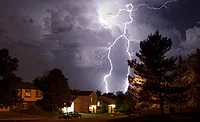4 Emergency Management Challenges Colleges Face This Year

College administrators and managers focus on planning for every possible emergency scenario in advance of each upcoming school year. However, new threats always emerge that will test your people and processes. Key to countering the unpredictable is putting in place an emergency management plan flexible enough to adapt in real-time, and having a system in place to rapidly communicate with students, faculty, staff and, more recently, even parents who are looking to be kept better informed when crisis develop.
There are four challenges in particular that college decision makers should focus on addressing as the school year progresses when it comes to effectively preparing for and managing emergency events:
The Changing Nature of How Students Communicate
The rapid evolution of how students communicate with each other – and how they want to be communicated with by universities – is always going to be a moving target. While students sitting in their dorm room or classes may visit a website specifically dedicated to campus security incidents and alerts, this all changes when students are mobile and more likely to check school social media handles first for updates.
Because students rely heavily on social media for information, colleges and universities must factor in that the spread of fake news can significantly hinder emergency response efforts by seeding chaos and confusion. MIT released a “fake news” study earlier this year finding that false news stories are 70-percent more likely to be retweeted than true stories are. This means that because students often turn to social media first when emergency events are unfolding, your ability to share accurate information rapidly across social media channels can prevent misinformation from snowballing.
It is also important to monitor engagement rates for other forms of emergency communication such as email, text message, push notification and automated voice calls. Frequently analyze data on open rates and other engagement metrics to ensure you are prioritizing communications that students use.
Capturing Student Information Shared Voluntarily
Students are incentivized at registration each year to share personal contact information in order to receive updates when classes are canceled and when campus events are taking place. That said, there will always be a desire by some students to maintain a level of privacy when it comes to voluntarily sharing this information, and there is no guarantee that students will self-update information throughout the school year if information changes.
Students will be more inclined to share personal contact information if they fully understand the value proposition of doing so. This requires dedicated orientation sessions on how this information will provide students with a degree of control on how they can be reached during emergency and day-to-day events, and that failure to provide this data will put them at an informational disadvantage when incidents occur.
Delivering Accurate, Timely Emergency Notifications
Getting ahead of social media disinformation, or simply sending out emergency notifications that students believe to be credibly sourced, is a growing challenge for college decision-makers. Emergency notifications delivered to student smartphones if for example, there is an active shooter on campus or a severe weather event is imminent must prioritize speed, but also recognize that sending inaccurate information too quickly can be worse than a delay. One way to balance this is by quickly sending out general information about an emergency event, while letting students know that more detailed updates will follow.
Emergency notifications to students can be enhanced when campuses work closely with local law enforcement. For some on-campus incidents such as reports of shots fired, often campus security are aware before local police. Being able to quickly launch a notification for the safety of faculty, staff and students can be improved with pre-built notification messages that can be launched with extreme speed in these instances.
Enabling One-on-One Student-Campus Communications
Emergency mass notifications are traditionally one-to-many, but there is student demand for an expanding use case of notification systems built around one-to-one communications. Universities able to deliver one-on-one features will be better positioned to enhance student and campus safety.
For example, consider the scenario of a female student leaving the school library at midnight who is uncomfortable walking back alone to her dorm. Offering the student the ability to access a campus safety mobile app “SOS” button to alert the security desk adds a new dimension to how systems can expand from mass notification to scenarios better suited for one-to-one communication.
Another example of one-on-one communication is a “lookout” feature that can be utilized by crowds or individuals to take a picture or report an incident to security from anywhere on or around campus. Some of these chat conversations can all take place within the app, so students don’t have to toggle back and forth between the app and text messages. In other cases, students don’t want inbound calls or emails, so providing a quick and easy way to allow them to open communications quickly – without the barrier to entry of an app download. These types of mobile features add an additional layer of security and comfort to students.
These use cases can be expanded beyond just emergency situations and can incorporate daily actions such as a special panel that includes bus schedule pickups and other Intranet related things.
As campuses evaluate their security systems, a well adopted, integrated and effective Emergency Mass Notification System is essential to emergency preparedness. Addressing student communication challenges, capturing student contact information, releasing swift and accurate updates, and embracing mobility are all important steps to build a strong emergency response plan, and overall communication strategy for a safer campus.
Looking for a reprint of this article?
From high-res PDFs to custom plaques, order your copy today!







